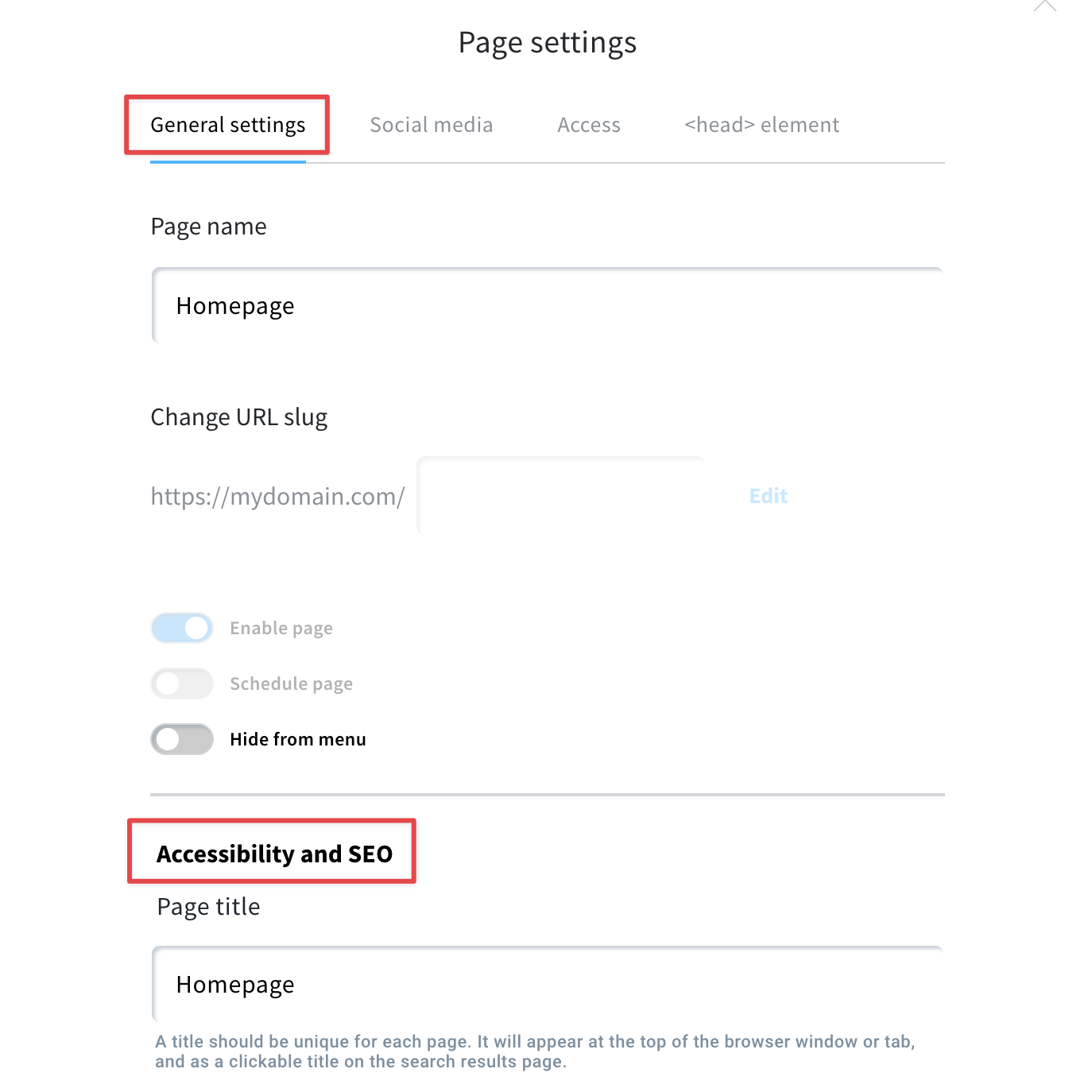How to add SEO details to my website? Video
You can add details for Search Engines Optimizations in your website’s settings to improve its search visibility and encourage more organic traffic towards it.
Each page of your website has its own SEO settings so that you can add accurate descriptions and meaningful keywords for each part of your website.
Changing SEO details
To add or change SEO details, go to:
- When in the Website Builder editor, click on the Manage pages button.

- Hover over the vertical ellipsis on the right and click on Settings.

- In the Settings window click on the General settings tab and scroll down to Accessibility and SEO. Changes are saved automatically when you click outside the text box.

- Add the Page title. Each page should have a unique name. It will appear at the top of the browser window or tab, and as a clickable title on the search results page.
- Add the Page description. The summary will appear as a snippet under the title on the search results page.
- Optionally you can enable toggle Search engines should show this page in search results (mark as index) to include your page in the search engines result pages. If you disable it, the page won’t be indexed by search engines and therefore it won’t be shown on the search engine’s result pages.
Repeat this process for each page of your website.
When you complete the SEO section, the values are often displayed in feature snippet as a page title and description in Google search results.
It also tells Google what the page is about, however based on page content, Google can overwrite your title and description by its own version.
How headings are recognised by browsers and search engines
To transform your text into a heading:
- Select the text.
- In the panel on the right in Text > Text settings > Type select the heading type.

Heading 1 is the main heading of the page, only one per page can be added, up to 60 characters long. For best search engine optimization it can include main keyword of the page.
The aim of Heading 2 and Heading 3 is to demonstrate the structure of a webpage to search engines and users, especially if they use screen readers.




